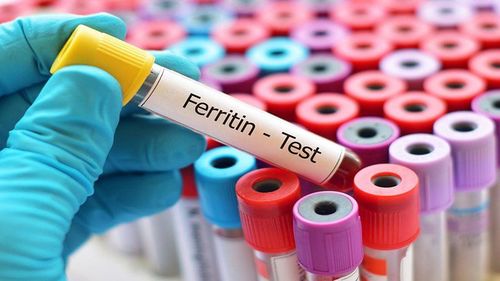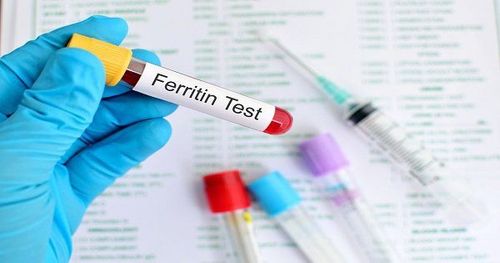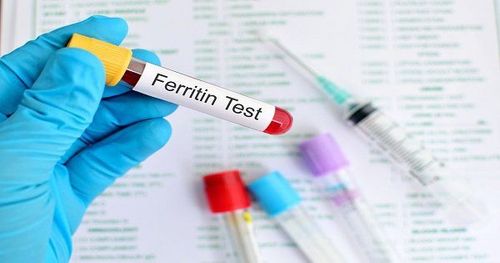This is an automatically translated article.
Iron is one of the essential minerals of the body involved in the formation of hemoglobin, directly related to the ability of red blood cells to attach and transport oxygen and many other important oxidation processes in the body. Therefore, iron testing and iron metabolism play an important role in clinical practice to detect disorders of iron concentration in the body.1. What is a serum iron test?
Serum iron test is a test to quantify iron present in the patient's serum, namely free iron, ferritin storage form, and the carrier form combined with transferrin, which exists in the blood circulating and transported throughout the body. body. Because the amount of iron present in the blood will vary continuously within 1 day and between different days, serum iron is often measured with other iron tests such as the optimal iron-binding capacity (TIBC) test. Transferrin saturation level (reflects the amount of iron circulating in the blood).
Iron screening tests used together can help detect and diagnose iron deficiency or iron overload, especially for patients with anemia, the test also contributes to the diagnosis of iron deficiency disease. or for other reasons. In addition, in some cases iron testing is indicated when iron poisoning is suspected and screening for hereditary hemochromatosis (hereditary disease related to iron storage).
2. When is an iron screening test ordered?
Serum iron test is not part of the routine testing group, but is only indicated when there are abnormalities detected on other indicators such as red blood cells, hemoglobin and hematocrit or suspect that the patient has iron overload or common iron deficiency. through specific symptoms.
Iron deficiency status: Patients with iron deficiency may have no symptoms or dangerous symptoms in the early stages, but when the iron stores reach a certain level, the body's iron stores may have signs and symptoms. symptoms such as prolonged fatigue, dizziness, headache, weakness. When the condition worsens, the patient may have difficulty breathing, chest pain and even loss of consciousness.
Iron overload: Symptoms of iron overload vary from person to person and include joint pain, decreased sex drive, abdominal pain, fatigue, lack of energy, and heart problems. circuit.

Người bệnh mệt mỏi kéo dài cần được xét nghiệm thăm dò sắt
3. Meaning of Iron Probe Tests:
Quantitative serum iron test:
This is a spectrophotometric test for the quantitative determination of transferrin iron in serum. The normal value of serum iron is about 6.6-28μmol/L, in which:
Serum iron concentration decreases: Iron deficiency anemia, chronic inflammation, acute blood loss,... Serum iron concentration Increased: Unreasonable iron supplementation, acute hepatitis, repeated blood transfusions, hereditary primary iron chromatosis causing increased iron absorption Transferrin test:
Transferrin is a glycoprotein synthesized in the liver that plays a role in transport iron in the body. The normal value of transferrin is about 2.0-3.6 g/L in which:
Transferrin increases: When the body increases the need to use iron, especially in pregnant women, the body lacks iron due to the diet. or stomach disease causing reduced iron absorption Transferrin reduced: When the body has excess iron, iron distribution disorder Ferritin test:
Ferritin is an iron storage protein present in organizations such as liver, spleen, bone marrow and a few other organs. A small fraction is released into the serum. The normal value of ferritin is about 30-400 μg/L and will decrease when the body is iron deficient, in contrast increase when the body is too iron (acute leukemia, liver cancer, colon cancer, lung cancer, etc.). ..)
If you have a need for consultation and examination at Vinmec Hospitals under the national health system, please book an appointment on the website (vinmec.com) for service.
Please dial HOTLINE for more information or register for an appointment HERE. Download MyVinmec app to make appointments faster and to manage your bookings easily.













